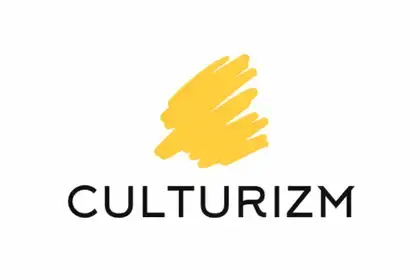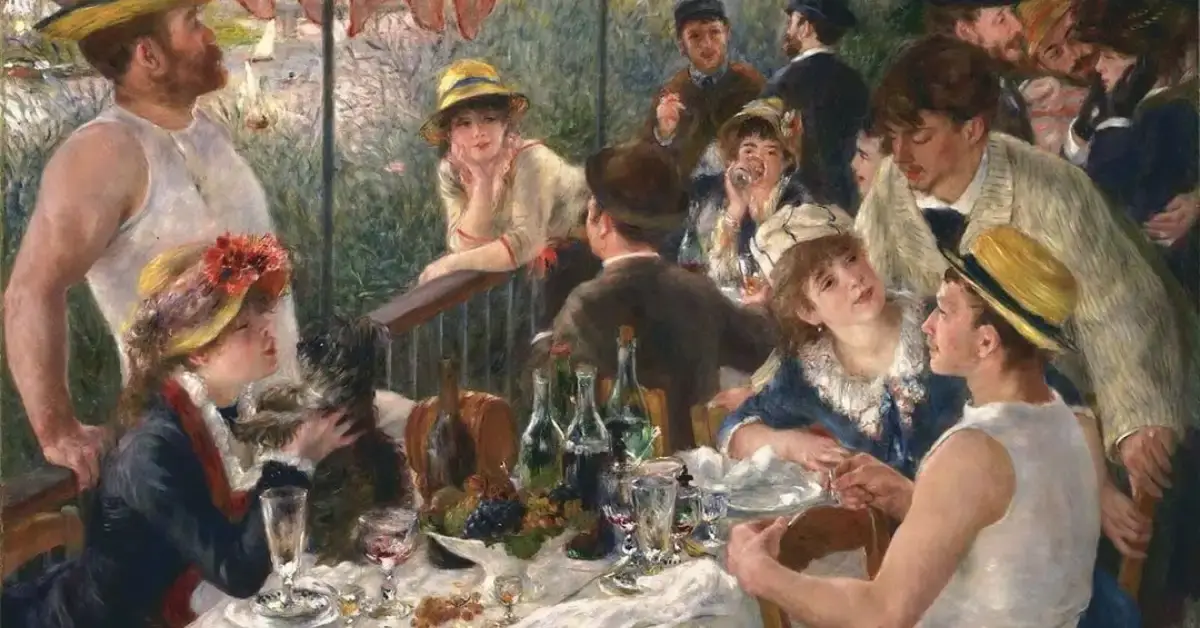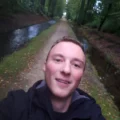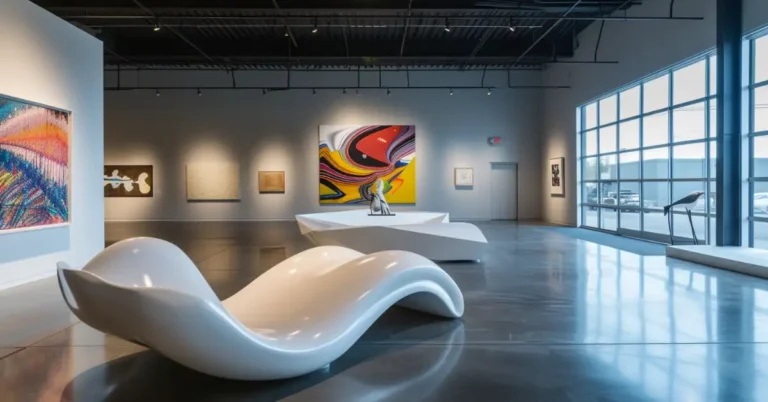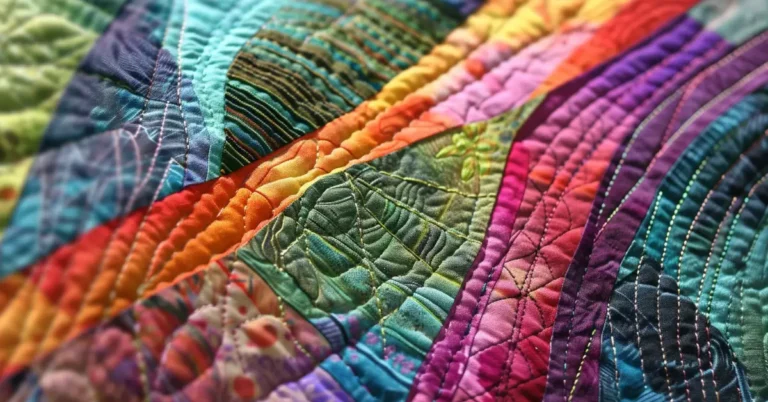What’s the Difference Between Contemporary and Modern Art: Contemporary art and modern art are two distinct categories of artistic expression that have evolved over time. While modern art movements such as Impressionism, Cubism, Surrealism, and Abstract Expressionism emerged in the late 19th century and continued through the mid-20th century, contemporary art is typically created by living artists and engages with the culture of the present day.
Contemporary art is more eclectic and complex, often incorporating a variety of media, from traditional painting to digital video installations, and focuses on social impact with society as the primary focus. In contrast, modern art is an expression of individuality, often characterized by experimentation with form and color. Understanding the differences between these two categories of art can help us appreciate the unique qualities of each and the ways in which they reflect the cultural values and artistic practices of their respective eras.
Understanding the Timeline and the Difference Between Contemporary and Modern Art
When it comes to understanding the difference between contemporary and modern art, the key lies in recognizing the timeline in which these two art categories exist.
Contemporary art is typically created by living artists and engages with the culture of the present day, while modern art encompasses numerous movements that began in the late 19th century and continued through the mid-20th century, such as Impressionism, Cubism, Surrealism, and Abstract Expressionism. Contemporary art is more eclectic and complex, often incorporating a variety of media, from traditional painting to digital video installations, and focuses on social impact with society as the primary focus. Modern art, on the other hand, is an expression of individuality.
Modern art refers to the period between the late 19th century and the mid-20th century and is characterized by its innovative break from traditional art forms. It encompasses a variety of art movements, such as Impressionism, Cubism, Surrealism, and Abstract Expressionism, just to name a few. This era of art aimed to reflect the evolving world around us, with artists striving to experiment with new techniques and ideas that challenge conventional norms.
Contemporary art, on the other hand, is art created in the present day, or in the recent past. It represents current times and often involves work by living artists. With contemporary art, we see an even broader range of media and styles, including digital art, installations, and performance art. This form of art frequently explores themes surrounding present-day issues like globalization, terrorism, and feminism.
Artistic Styles and Movements
We often hear about the “difference between contemporary and modern art” and while it might seem like a simple question, it can be a bit confusing!
Exploring Modern Art
Modern art refers to a period spanning from the late 19th century up to the mid-20th century, and it’s characterized by a variety of artistic styles and movements. Here are a few highlights:
- Impressionism: This style focuses on capturing the fleeting moment, using light and color to create a certain atmosphere
- Cubism: Pioneered by artists like Picasso, this movement breaks down subjects into geometric shapes and presents them from multiple perspectives
- Surrealism: Dreamlike, fantastical, and sometimes unsettling, this style aims to explore the world of the unconscious mind
- Abstract Expressionism: Energetic brushstrokes, bold colors, and a focus on emotional expression define this movement. Think Jackson Pollock and his famous “drip paintings”
- Other notable styles in modernism include Fauvism, Expressionism, Suprematism, Dada and Post-Impressionism
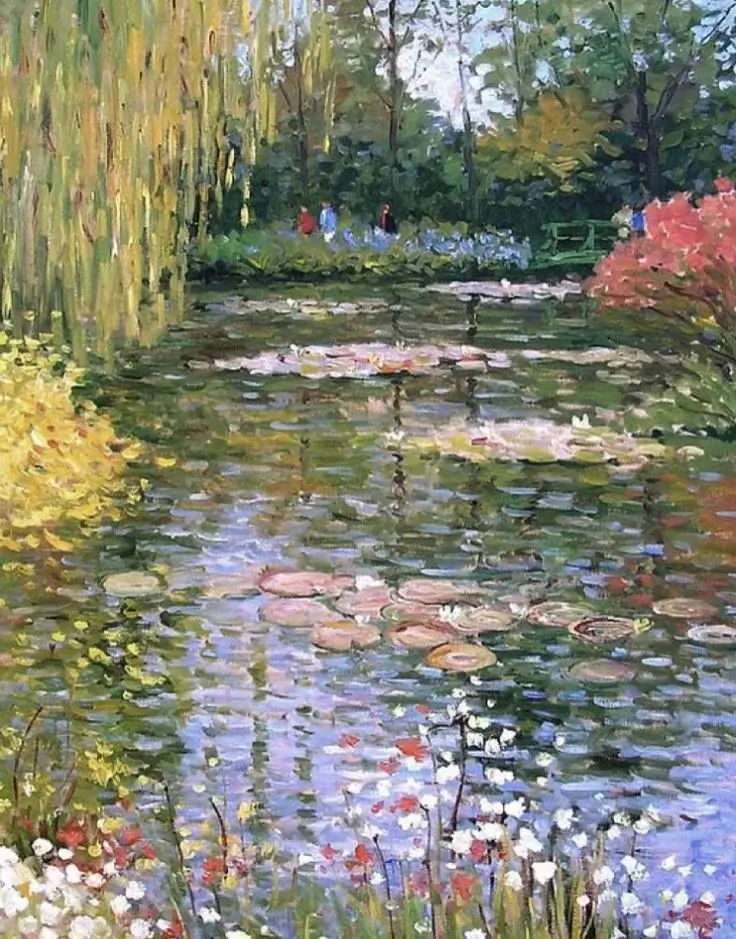
Delving Into Contemporary Art
Postmodernism and various “Neo” movements are hallmarks of contemporary art, which emerged around the 1960s and continues today. Here are some of its key elements:
- Conceptual Art: This style prioritizes ideas and concepts over the visual or formal aspects of a work of art
- Pop Art: With its bright colors and references to popular culture, pop art challenges traditional definitions of “high art”
- Neo-Expressionism: Characterized by intense colors, expressive brushstrokes, and an emphasis on the emotional impact of a piece, this movement is a resurgence of Expressionism in a contemporary context
- Abstract Art: While also found in modern art, contemporary abstract art often pushes the boundaries of what can be considered art, such as through installation work or digital media
While this is just a brief overview, exploring the various artistic styles and movements in both modern and contemporary art will give you a better understanding of their differences and enrich your appreciation of these fascinating periods in art history.

Key Artists and Their Influence
When exploring the exciting world of art, it’s nearly impossible to overlook the incredible impact key artists have had on the development of both modern and contemporary art.
Modern Art Icons
Modern art, which began in the 1860s and continued until the 1970s, witnessed a plethora of influential artists who significantly shaped the art movement of that time. Among these iconic figures are masters like Vincent Van Gogh, famous for his expressive use of color and brushstrokes in works like “Starry Night” and “Sunflowers”. Another powerhouse of the modern era is Pablo Picasso, whose groundbreaking and innovative creations led to the emergence of the Cubist movement. Other notable modern art icons include:
- Salvador Dali: Surrealist painter known for his bizarre, dream-like imagery. Example: “The Persistence of Memory”
- Frida Kahlo: Mexican artist famous for her deeply autobiographical and symbolic pieces. Example: “The Two Fridas”
- Édouard Manet: Hailed as the ‘father of Modern Art’, Manet’s artworks often challenged the conventional subject matter of his time. Example: “Luncheon on the Grass”

Pinterest Frida Kahlo Artwork
Contemporary Art Pioneers
The contemporary art movement, which emerged in the late 20th century, saw numerous artists pushing the boundaries of artistic expression with novel ideas, new mediums, and powerful concepts. Some of the most influential contemporary art pioneers include:
- Yoko Ono: A driving force in the Fluxus movement, Ono’s artwork emphasized the importance of viewer participation and engagement. Example: “Cut Piece”
- Yayoi Kusama: Famed for her immersive installations and use of vibrant colors, Kusama explores the concepts of infinity and the cosmos. Example: “Infinity Mirrored Room”
- David Hockney: Recognized for his diverse range of artwork, from vibrant landscapes to digital drawings, Hockney continues to captivate the global art audience. Example: “A Bigger Splash”
- Jackson Pollock: Credited with the invention of Action Painting, Pollock’s ‘drip paintings’ captivated audiences with their unique style. Example: “No. 5, 1948”
Though these artists are just the tip of the iceberg, their contributions highlight the difference between contemporary and modern art and exemplify the dynamic variety of the art world. Contemporary artists like Banksy, Damien Hirst, and Cindy Sherman continue to push boundaries and redefine creative expression with each new work.
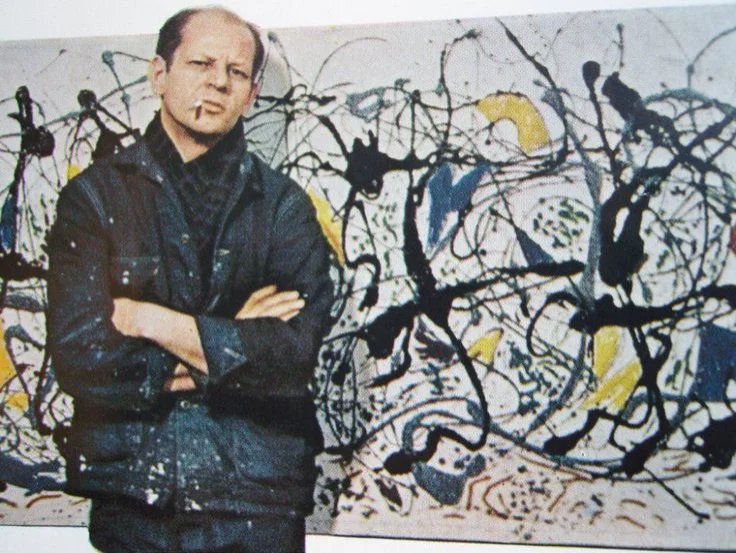
Pinterest Jackson Pollock
Mediums and Techniques
Have you ever wondered about the difference between contemporary and modern art in terms of mediums and techniques?
Classic and Modern Mediums
In modern art, the late 19th and mid-20th centuries saw a shift away from traditional forms and subject matter. Artists experimented with various mediums, from oil painting and drawing to sculpture. Some popular modern art trends such as abstract paintings focused on exploring new techniques and ideas. Here’s a quick list of commonly used mediums in modern art:
- Oil painting
- Drawing
- Sculpture
- Photography
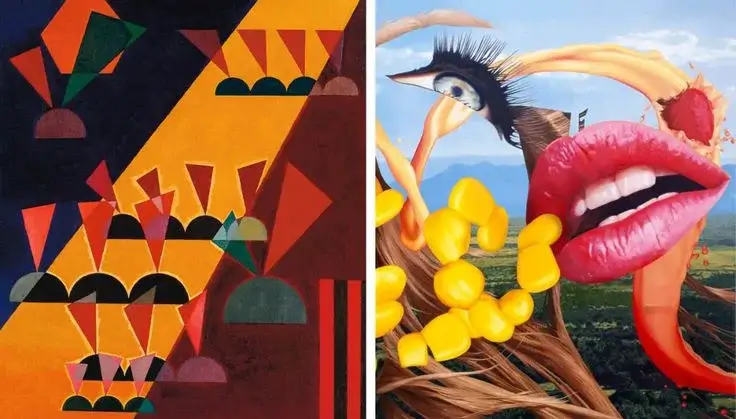
Pinterest Left Modern Art | Right Contemporary Art
Contemporary and Experimental Mediums
As we move into the realm of contemporary art, which refers to art produced today or in the recent past, there is an even more diverse range of mediums and techniques being employed. Technology has played an essential role in expanding the possibilities of contemporary art. Alongside traditional mediums like paint and sculpture, we find artists delving into digital media, video art, installation, performance art, and multimedia projects.
Some examples of contemporary mediums include:
- Digital art
- Video art
- Installation
- Performance art
- Multimedia projects
This exciting variety of mediums and techniques showcases the evolving world of art and the boundless creativity of artists, regardless of whether they’re working within modern or contemporary art scenes.
Interpreting Art
When exploring the difference between contemporary and modern art, we must delve into how we perceive and interpret these genres. By examining their characteristics and frameworks, we can better understand the artists’ intent and the emotions they sought to evoke. Let’s dive into analyzing modern art and deciphering contemporary art.
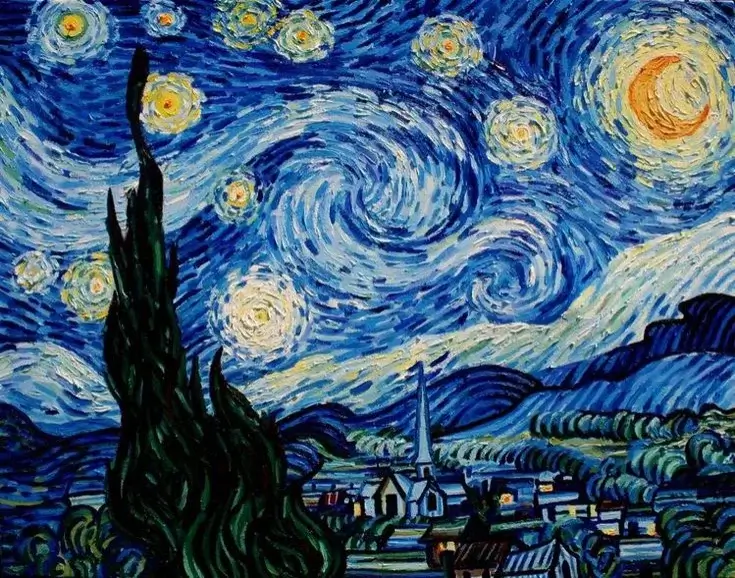
Analyzing Modern Art
Modern art emerged during the 1860s and continued to evolve until the 1970s. It encompasses various movements such as Impressionism, Cubism, Surrealism, and Abstract Expressionism. One of the most significant aspects of modern art is the emphasis on the artists’ feelings and emotions during the creative process.
Utilizing abstraction to varying degrees, modern artists often sought to challenge traditional art and its reliance on realistic representation. By doing so, they amplified the importance of the concept and the idea behind the artwork. Aesthetics was also a key focus, manifesting in vibrant colors, dramatic brushstrokes, and innovative compositions.
Deciphering Contemporary Art
Contemporary art represents the present day. It not only comprises a variety of media such as traditional painting, video art, and tech-enabled artworks but also often revolves around current issues like globalization, terrorism, and feminism. Conceptual art plays a significant role in contemporary pieces, blurring the lines between the art form and its meaning.
The expressive nature of contemporary art allows for a diverse range of representations, crossing cultural, social, and geographical boundaries. In contrast to modern art’s emphasis on the emotional aspect, contemporary art often focuses on raising questions, advocating for change, and reflecting society’s values and concerns.
FAQ
Is contemporary style the same as modern?
Contemporary style and modern style are not the same. While modern style refers to design from the early to mid-20th century, contemporary style is more fluid, ornamental, and features natural materials like concrete and steel.
How do you know if art is contemporary?
Contemporary art is art made by living artists today and reflects the complex issues that shape our diverse, global, and rapidly changing world.
What is an example of contemporary art?
Answer in no more than 50 words and no more than 300 characters.
An example of contemporary art is Yayoi Kusama’s “Infinity Mirrored Room – The Souls of Millions of Light Years Away,” a dazzling installation of mirrors and LED lights that creates an immersive and otherworldly experience for viewers.
Is Mona Lisa a contemporary art?
No, Mona Lisa is not a contemporary art piece. It is a 15th-century oil painting by Leonardo da Vinci and is considered a masterpiece of the Renaissance era.
If you enjoyed reading this blog post on the topic of “Difference Between Contemporary and Modern Art“, we would love to hear your thoughts about it. Please leave a comment below and share your experience with us.
If you want to keep reading more from us, have a look at these articles.
